When it comes to coffee, we tend to stick to what we know, with our morning coffee often setting us up for the rest of the day. While some may enjoy the pure caffeine kick, others may enjoy the full flavoured variety, as well as the cheeky sugar hit to get them over the bitter coffee taste. Regardless of what your drink of choice is, having a coffee well-made is a must for many. But which coffee type should you pick?
From the complete coffee novice through to those looking to get into the barista business, knowing the difference between the many types of coffee is important. If nothing else, you’ll impress your friends on your next coffee shop trip. So, if you can’t tell a latte from a long black, read on as we guide you through common types of coffee sold in Australia.
Shop online now
Types of coffee
There are a number of ways to have your morning cuppa, with a list of the different types of coffee in Australia listed below. Feel free to skip ahead to your desired choice, or keep scrolling to check out the whole bunch.
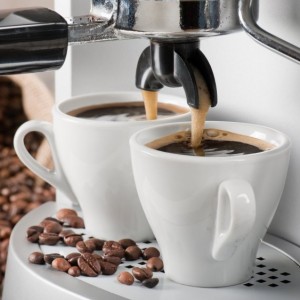
- Café Latte
- Cappuccino
- Espresso
- Piccolo Latte
- Vienna
- Mocha
- Affogato
- Flat White
- Long Black
- Americano
- Irish Coffee
- Macchiato
- Ristretto
- Cold Brew
- Frappuccino
- Iced Coffee
- Café au Lait
- Nitro
Coffee brewing styles
Just as there are different types of coffee, there are also different coffee brewing styles. Each style is designed to bring a specific flavour or strength to the drink, and often different drink types, like lattes or Americanos, will use their own brewing style to master their flavour. Some common coffee brewing types include:
- Espresso
- Ristretto
- Drip
- Cold Brew
Espresso
An espresso brew is achieved from finely ground coffee beans that have been run through an espresso coffee machine. This is probably the most common type of coffee brew on offer in Australia and the brewing style many of us will be most familiar with. To brew an espresso shot, pressurised hot water is run through a small filter or basket containing finely ground coffee beans to create a highly concentrated, strong, flavourful coffee shot.
Ristretto
A ristretto brew is achieved in a similar fashion to an espresso shot, only it uses half the amount of water for a shorter period of time. By running it on a shorter time frame, the shot becomes more concentrated, creating an even stronger and bolder flavour than the espresso shot.
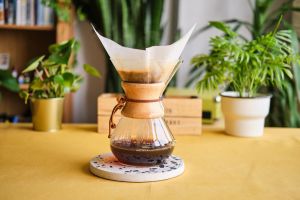
Drip
A drip brew is achieved by adding medium ground coffee beans to a basket and pouring hot water over the top of it. The coffee and water mixture then filters through the basket into a glass jar beneath it, creating a strong, dark shot. Drip coffee is most commonly used for simple, black coffee.
Cold Brew
To achieve a cold brew, coarsely ground coffee beans are mixed with room temperature water and left to steep over a period of time – usually about 12 to 18 hours. Cold brew isn’t typically as strong as other brews as it uses cooler water. More caffeine can be extracted with hot water than with cold.
Read more: How to brew the perfect coffee at home
Now that you know the different brewing styles, it’s time to jump into the different types of coffee you can get with these brews!
Café Latte
A good option for those who aren’t a coffee connoisseur, lattes are made with foamed milk, aiding to hide the bitterness of coffee. Lattes contain one or more shots of espresso (depending on how strong you like it), with the milk poured over it, creating a frothy drink for you to enjoy. A word of advice for the traveller though, be sure to order a ‘café latte’ when you’re in Italy, as ordering a simple latte will score you a glass of milk.
- Country of Origin: Italy
- Ratio: 1/3 coffee shot, 2/3 lightly frothed milk
- Cup: Glass cup
- Brew: Espresso
Cappuccino
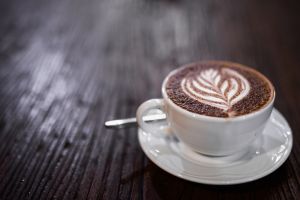
One of the more popular options when it comes to coffee, the cappuccino has multiple layers to it, giving it extra taste and texture. The first layer is made up of espresso, giving you the caffeine kick, followed by a shot of steamed milk to counter the bitter coffee taste, topped off with a layer of foamy milk to make it easy to drink. Cappuccinos are often finished off with a sprinkling of chocolate powder, giving drinkers a slight sugar hit as well, perfect for those early mornings.
- Country of Origin: Italy
- Ratio: 1/3 coffee shot, 1/3 steamed milk, 1/3 frothed milk – topped with chocolate powder
- Cup: Ceramic mug
- Brew: Espresso
Espresso
While the base for many other coffees, espressos can also be enjoyed by themselves, with the smaller, more concentrated caffeine hit a popular option at many cafés. No milk or extras are usually added to an espresso, making it an acquired taste for some, but the perfect hit for those who simply need to wake up. An espresso may also be referred to as a ‘short black’ in some venues.
- Country of Origin: Italy
- Ratio: 1 shot of coffee
- Cup: 30ml-5oml shot glass or ceramic mug
- Brew: Espresso
Piccolo Latte
For those who haven’t yet acquired the taste of a straight espresso, the piccolo latte may be your new go-to option. Adding a small amount of foamed milk on top of an espresso shot, the piccolo latte is often considered the middle ground between the café latte and the espresso, making it ideal for those who like a bit of sweetness to their coffee.
- Country of Origin: Italy/Australia
- Ratio: 1 shot of coffee, a dash of steamed milk
- Cup: 5oml-100ml shot glass or ceramic mug
- Brew: Espresso
Vienna
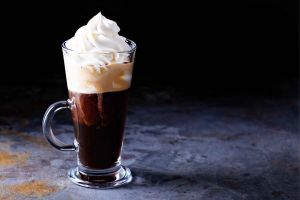
A perfect option for those who need a strong caffeine hit, as well as enjoy something sweet, the Vienna coffee is made up of two espresso shots, with whipped cream mixed in to the drink instead of the usual, traditional milk and sugar. Often topped with chocolate sprinkles, the Vienna is a good option regardless of the weather.
- Country of Origin: Austria
- Ratio: 2 shots of coffee – topped with whipped cream
- Cup: Glass or ceramic mug
- Brew: Espresso
Mocha
Another go-to option for first time coffee drinkers, the mocha is a latte with a few extras, including chocolate powder or syrup added, making it a bit thicker and sweeter than most coffees, while still containing a hint of coffee taste. While it will depend on how much you like sweet things, the choice between a mocha and a latte will be up to you.
- Country of Origin: Italy
- Ratio: 1/3 coffee shot, 2/3 steamed milk (lightly frothed), heaped scoop/pump of desired powder or syrup (typically chocolate) – topped with chocolate powder
- Cup: Glass or ceramic mug
- Brew: Espresso
Affogato
If you’re looking to get coffee and ice cream, why not get both at the same time with an affogato? Most affogato coffees contain vanilla ice cream or gelato in a glass with an espresso shot poured over the top, while some places may also include some liqueur if you’re lucky.
- Country of Origin: Italy
- Ratio: 1 coffee shot, heaped scoop of ice cream – occasionally topped with a special liqueur
- Cup: Glass cup
- Brew: Espresso
Flat White
An absolute nightmare to find when overseas, many Australians are partial to a flat white as their beverage of choice, with the coffee drink often confused with a latte due to their similar ratios and ingredients. A flat white is made with an espresso shot and milk, with the difference coming from the milk itself. While a latte uses frothy or foamy milk, a flat white uses smoother milk, often found lower down in the milk jug, giving the flat white a smoother consistency and texture.
- Country of Origin: Australia
- Ratio: 1/3 coffee shot, 2/3 steamed milk (no froth)
- Cup: Ceramic mug
- Brew: Espresso
Long Black
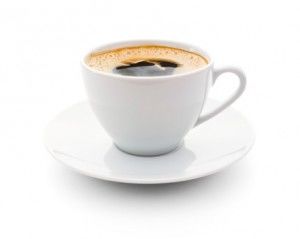
Not for the faint of heart, a long black or Americano is a mixture of hot water and two shots of espresso, making it one of the bigger coffee hits you can get. While usually only favoured by those adverse to sugar, or those who want a caffeine hit pure and simple, the long black is generally for coffee veterans. While long black is the preferred name of this coffee in Australia, you’ll probably find that elsewhere, this beverage will be referred to as an Americano.
- Country of Origin: Australia
- Ratio: 1/3 coffee shot, 2/3 hot water
- Cup: Ceramic mug
- Brew: Espresso
Americano
With a similar makeup to a long black, an Americano coffee is made with one espresso shot and more hot water. As the name suggests, this is a common beverage in America – made popular by American soldiers rationing coffee by watering it down. The main difference between these two drinks however, is the preparation. Americano’s pour the coffee first and then the hot water, whereas long blacks will serve the shots on top, showing off a gorgeous layer of crema.
- Country of Origin: Italy
- Ratio: 1/3 coffee shot, 2/3 hot water
- Cup: Ceramic mug
- Brew: Espresso
Irish Coffee
While not something that’s guaranteed to make you productive first thing in the morning, an Irish coffee is made with hot coffee mixed with Irish whiskey, sugar and topped with thick cream – and is a popular cocktail. While your local barista may not know how to make one, a bartender may be able to help you out. Some coffee shops may also substitute the Irish whisky with a flavoured syrup instead, like an Irish Crème or an Irish Crème and hazelnut mix.
- Country of Origin: Ireland
- Ratio: 1/3 coffee shot, 1/3 thick cream – with sugar + desired liqueur/syrup
- Cup: Glass cup
- Brew: Espresso
Macchiato
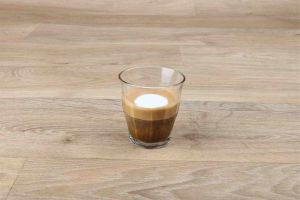
Similar to the piccolo, a macchiato is made using one shot of coffee and a dash of frothed milk. Almost like a baby cappuccino, a macchiato is great for the seasoned coffee drinker who is looking for a quick and simple caffeine hit, with just a hit of sweetness. This drink can also come as an iced option, with a similar taste and look to an iced latte, but be sure to specify if this is what you are after! Otherwise, you may end up with an entirely different coffee.
- Country of Origin: Italy
- Ratio: 1 coffee shot, a dash of frothed milk
- Cup: 5oml-100ml shot glass or ceramic mug
- Brew: Espresso
Ristretto
A ristretto is simply a half shot of espresso. Using the ristretto brewing method, this beverage is a smaller, more concentrated and stronger espresso type for the coffee lover in your life. Plot twist however, the ristretto shot has a slightly sweeter taste than the espresso shot, thanks to its high concentration.
- Country of Origin: Italy
- Ratio: 1/2 ristretto coffee shot
- Cup:5oml-100ml shot glass or ceramic mug
- Brew: Ristretto
Cold Brew
Much like its brew type, a cold brew coffee is simply a glass of cold brewed coffee. As it is already quite watered down, this drink can be drunk on its own, although milk or flavoured syrups can be added depending on individual taste. Some coffee shops may use this brew type as their go to for iced coffees, iced long blacks or even Frappuccino’s, while others may just serve it on its own. Cold brew also has a slightly sweeter taste and less caffeine than hot coffee mixtures.
- Country of Origin: Japan
- Ratio: 1 part coffee ground, 2 parts cold water – milk, syrup, ice or extra water may be added depending on taste
- Cup: Glass cup
- Brew: Cold brew
Frappuccino
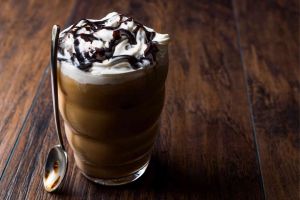
Somewhat of a new age coffee drink is the tasty Frappuccino. You’ll probably be most familiar with this coffee thanks to Starbucks, who trademarked the drink back in 1994. A Frappuccino or Frappe, is essentially a sweet, sugary iced coffee mix that’s blended with milk and different flavourings. The drinks are then topped with whipped cream and even more sugary sweets and syrups. The Frappuccino is basically like a big kid’s milkshake.
- Country of Origin: USA
- Ratio: 1/3 coffee, 2/3 milk or water and desired flavourings- topped with whipped cream, syrups and toppings
- Cup: Glass cup
- Brew: Cold brew/espresso (depending on location)
Iced Coffee
While not as flashy as the Frappuccino, the humble iced coffee is another sweeter coffee type available. An iced coffee is typically made up of an espresso shot, milk and ice, and then topped with a scoop of ice cream. Occasionally, an iced coffee will also come with a flavoured syrup or added sugar. The iced coffee, however, is not to be confused with the iced latte, which only comes with an espresso shot, milk and ice.
- Country of Origin: Algeria
- Ratio: 1/3 coffee, 2/3 milk, ice, heaped scoop of ice cream
- Cup: Glass cup
- Brew: Cold brew/espresso (depending on location)
Café au Lait
A Café au Lait (pronounced cafe oh lay) is essentially a classy take on the classic French Press. A concoction of French Press coffee and scalded milk, this type of coffee offers a bold flavour and often pairs well with a pastry or croissant. Although similar to a latte, the Café au Lait is slightly stronger than a classic latte, as it uses more coffee than the latte does.
- Country of Origin: France
- Ratio: 1/2 hot coffee, 1/2 steamed milk
- Cup: Glass cup or ceramic mug
- Brew: French Press
Nitro
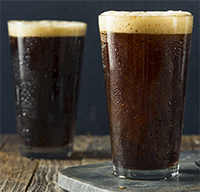
An up-and-coming fan favourite of the coffee connoisseurs is Nitro coffee. Infused with nitrogen gas, nitro coffee is a dense and creamy cold coffee selection that’s perfect for those with a sweeter tooth. The nitrogen gas leaves it with a frothy appearance, not dissimilar to that of a beer or cider. Some coffee shops will even serve their nitro brew on tap too. You can also find nitro coffee in the supermarket for sale in individual cans.
- Country of Origin: USA
- Ratio: 1/3 coffee, 2/3 water – infused with nitrogen gas
- Cup: Glass cup
- Brew: Nitro
What is the difference between single origin and blend coffee?
It’s not uncommon to walk into a coffee shop or supermarket aisle and immediately be bombarded by the many coffee options, making it difficult to choose. In reality, coffee is divided into two types – single origin and blended – and the difference between them is actually very simple.
Single origin means that the entire coffee crop comes from one country, region or even farm. Blended coffee is made up of two or more types of coffee, that come from a few different places. While some coffee enthusiasts swear by the purity of the single origin, coffee blends can also deliver complexity of flavours that make your coffee a more interesting brew. Really, the choice is up to you!
Homemade coffee vs. café coffee
While grabbing a coffee on the way to work, or grabbing one during that mid-afternoon slump, is a common trait among office workers, buying a coffee every day can quickly rack up a big expense. As a result, plenty of coffee drinkers have turned to making their coffee at home, to fill their caffeine fix. Nearly 58% of respondents in a recent Canstar Blue survey indicated that they used their coffee machine every day, with 38% also stating that they had spent less money buying coffee outside of their home since buying their coffee machine.
Shop coffee machines with some of our referral partners^
While it’s nice to have someone else make your coffee, as well as have a bit more variety when it comes to pods and sachets, how you like your coffee is a personal choice, and knowing the difference between a long black and an Americano may save you from disappointment down the line.
Image credit: Elena Veselova/Shutterstock.com, Alp Aksoy/Shutterstock.com, Ayman Zaid/Shutterstock.com.
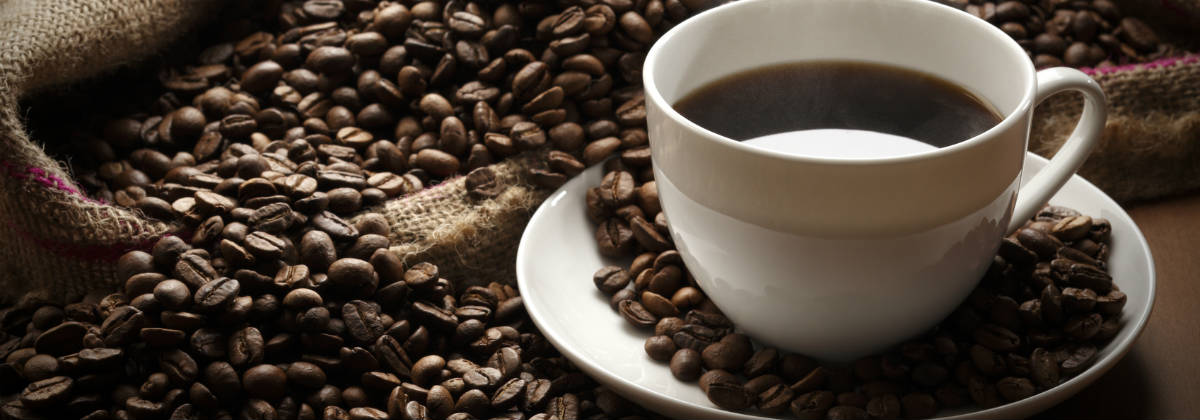


Share this article